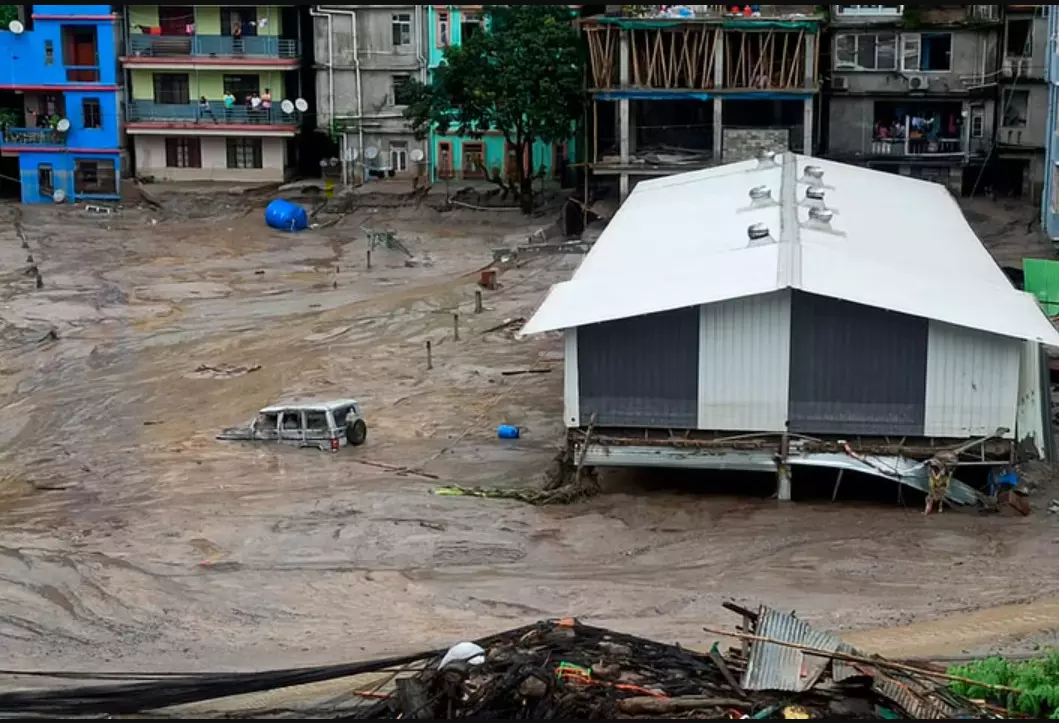Tragic fault lines

The recent flash flood tragedy resulting from a cloudburst over South Lhonak Lake in Sikkim has left the nation mourning. The devastating aftermath, with over 20 lives lost, nearly 100 people missing, more than 22,000 individuals affected, and approximately 10,000 seeking refuge in relief camps, has plunged the state into chaos and despair. In the face of such a catastrophe, the immediate reflex is to search for the natural triggers, but one must also acknowledge the human handprints that exacerbate these crises. As the state grapples with the profound sorrow of this disaster, it is imperative to recognize that our vulnerability to such calamities is not solely due to natural factors beyond human control. The tragedy in Sikkim highlights the often-ignored interplay of anthropogenic factors that contribute to these crises. At the first glance, it seems that the calamity may have been triggered by a deadly convergence of excessive rainfall and a Glacial Lake Outburst Flood (GLOF) at South Lhonak Lake in North Sikkim. GLOFs are sudden and catastrophic events that occur when the dam or moraine holding back water in a glacial lake fails or breaches. The Himalayan region, including Sikkim, is home to thousands of glaciers, which as they melt, give rise to glacial lakes. These lakes are typically dammed by natural moraines or debris, formed by the glacier's movement. However, these moraines can be unstable, and the lakes they contain can grow in size as glaciers continue to melt, increasing the risk of a GLOF. Climate change, with its rising temperatures, has accelerated glacial melt in many areas, leading to more rapid filling of glacial lakes and added pressure on the natural dams. Sikkim, nestled within the Himalayan Ranges, faces an elevated risk of such calamities due to its extensive glacial lake system. As per a report by Telegraph, the National Disaster Management Authority (NDMA) estimates that around 10 per cent of the region's 7,500 glacial lakes, identified through remote sensing, are situated in Sikkim. Alarmingly, approximately 25 of these lakes have been designated as 'at-risk.' The region's susceptibility is further compounded by its propensity for intense local rainfall events. What adds a painful layer to this tragedy is the fact that scientists and researchers have been warning about such a disaster, particularly in the South Lhonak Lake region, since as far back as 2003. The first inventory of glacial lakes in the Sikkim Himalayas, conducted in 2003, identified 266 lakes, with 14 of them considered potentially critical. Subsequent studies in 2013 and 2017 echoed these warnings. Despite these repeated alarms, the relentless pursuit of infrastructure development and the race to harness Sikkim's water resources continue unabated. It is disheartening to see how these warnings are consistently ignored until disaster strikes, only to fade away from public attention shortly thereafter. It is high time that policymakers start viewing these disasters as more than merely 'natural' occurrences because, in reality, they are human-made to a significant extent. Unchecked development activities in sensitive regions, particularly those prone to GLOFs, contribute to the magnitude of these tragedies. The allure of rapid economic growth and resource exploitation often blind governments to the inherent risks and vulnerabilities that come with it. It must be recognised that disaster preparedness and risk mitigation should be integral parts of development strategies. This involves not only heeding the warnings of scientists and experts but also making informed decisions about where and how to build infrastructure and manage natural resources. Policymakers cannot afford to allow short-term gains to overshadow the long-term well-being and safety of people and the regions they call home. It is time for responsible development, proactive risk assessment, and sustainable practices. Sikkim's tragedy should serve as a poignant reminder that humans are not powerless in the face of nature's fury; we have the power to reduce the impact of such catastrophes through informed, responsible actions.



